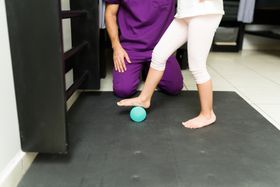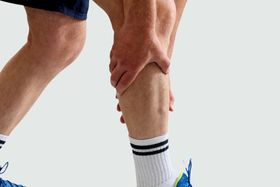Shin Splints: Causes and Fastest Treatment Options
Updated December 18, 2024.

Shin splints, also known as medial tibial stress syndrome, is an inflammation of the muscles, tendons, and bone tissue surrounding the tibia. It is caused, aggravated, and treated by various conditions that will all be discussed within this article.
What Are Shin Splints?
The condition usually affects the posterior and anterior tibial tendons and, in more severe cases, the flexor digitorum longus and flexor hallucis longus tendons. The posterior tibialis, flexor digitorum, and soleus muscles mainly serve in stabilizing the lower leg and foot, as well as in pushing off while running.
Symptoms of Shin Splints
Pain is most commonly felt near the inner border of the tibia (shin bone), where the muscles bind to the bone. Additionally, you may experience the following symptoms:
- Stiffness, soreness, cramps, or redness along the inside of your shinbone and related muscles
- Mild swelling in your lower leg
- Numbness and weakness in the feet
- Aggravated pain after exercise
In severe cases, the pain may progress to a stress reaction or a stress fracture.
Causes of Shin Splints
Repetitive tension on the shinbone and the connective tissues is the most common cause of shin splints. Excessive force or bone fractures cause muscles to enlarge, which puts more pressure on the bone and causes pain and inflammation. Track and field athletes, especially sprinters and jumpers, are highly susceptible, as well as military cadets and vigorous dancers. This likelihood increases further in athletes with flat feet or particularly stiff arches.
The 7 Most Common Causes of Shin Splints
- Starting or increasing the intensity of a sport or training
- Wearing shoes that aren't supportive
- Running or participating in sports on hard surfaces
- Running on sloping or uneven terrain
- Prior history of foot and ankle disorders
- Inadequate running form
- Tense calf muscles
Shin splints progress through four stages:
- Grade 1 Pain that occurs as a result of sports activity
- Grade 2 Pain that occurs before and after sports activity but has no effect on the individual's performance.
- Grade 3 Pain that occurs before, during, and after sports exercise and impacts the individual's performance.
- Grade 4 Severe pain that makes physical exercise impossible.
How to Treat Shin Splints
Shin splints typically necessitate a break from specific physical activity and a period of relaxation for your legs. Your doctor will most likely recommend the following home remedies:
- Hold your legs elevated.
- Apply ice packs to minimize swelling.
- Take an anti-inflammatory medication, such as ibuprofen (Advil) or naproxen sodium (Aleve).
- Massage your shins using a foam roller.
- Using insoles or orthotics in your shoes if your arches collapse or flatten as you stand up.
To hasten shin splint recovery, you should relax and let your leg heal. You should also avoid activities that may aggravate the problem and follow the RICE method, which stands for Rest, Ice, Compression (consider using compression socks for shin splints), and Elevation.
Shin splints are rarely treated surgically. If your shin splints are causing considerable pain and the symptoms have lasted for several months, your doctor may recommend surgery. It's impossible to predict when your shin splints will go away. It is determined by what caused them. People heal at varying rates as well, commonly within 3-6 months.
How to Prevent Shin Splints
You can avoid shin splints by doing the following:
- Wear shoes that fit well and provide adequate support.
- Make use of shock-absorbing insoles.
- Avoid exercising on hard, sloping, or uneven terrain.
- Gradually increasing the intensity of activity.
- Warm up and stretch appropriately before exercising.
- Prevent abrupt increases in physical activity.
- Strength training, specifically toe movements that strengthen the calf muscles.
- Maintain a healthy body weight.
Any rigorous training program necessitates the strengthening of all surrounding muscle groups. Workouts should be diversified to minimize overuse and injury to any specific muscle group. If you have significant muscle pain or other physical problems, you should discontinue any intense activity program.
Athletes who wear proper footwear, gradually increase their activity level, cross-train, and utilize the RICE technique are more likely to prevent and treat shin splints.








